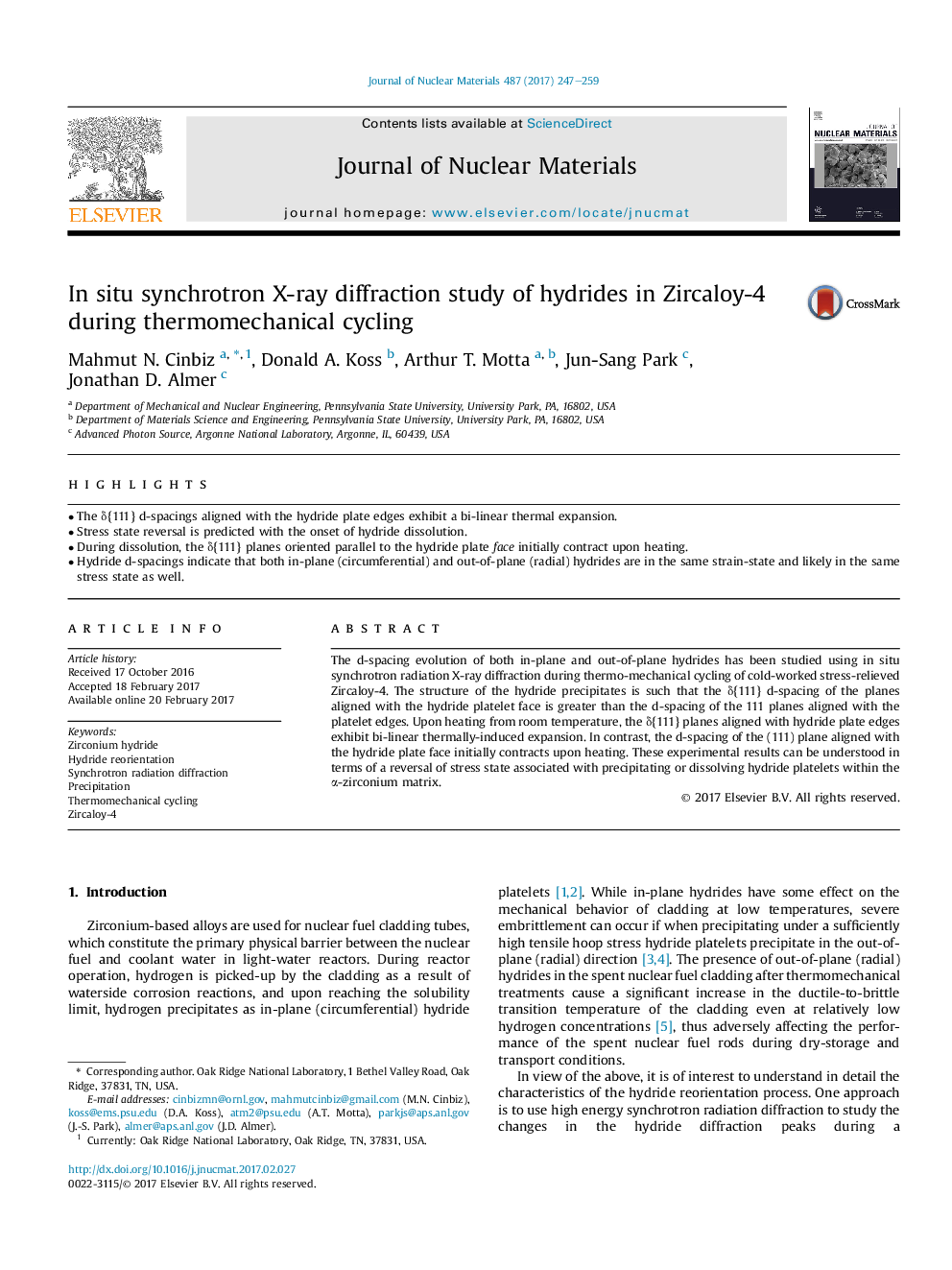| Article ID | Journal | Published Year | Pages | File Type |
|---|---|---|---|---|
| 5454135 | Journal of Nuclear Materials | 2017 | 13 Pages |
Abstract
The d-spacing evolution of both in-plane and out-of-plane hydrides has been studied using in situ synchrotron radiation X-ray diffraction during thermo-mechanical cycling of cold-worked stress-relieved Zircaloy-4. The structure of the hydride precipitates is such that the δ{111} d-spacing of the planes aligned with the hydride platelet face is greater than the d-spacing of the 111 planes aligned with the platelet edges. Upon heating from room temperature, the δ{111} planes aligned with hydride plate edges exhibit bi-linear thermally-induced expansion. In contrast, the d-spacing of the (111) plane aligned with the hydride plate face initially contracts upon heating. These experimental results can be understood in terms of a reversal of stress state associated with precipitating or dissolving hydride platelets within the α-zirconium matrix.
Keywords
Related Topics
Physical Sciences and Engineering
Energy
Nuclear Energy and Engineering
Authors
Mahmut N. Cinbiz, Donald A. Koss, Arthur T. Motta, Jun-Sang Park, Jonathan D. Almer,
